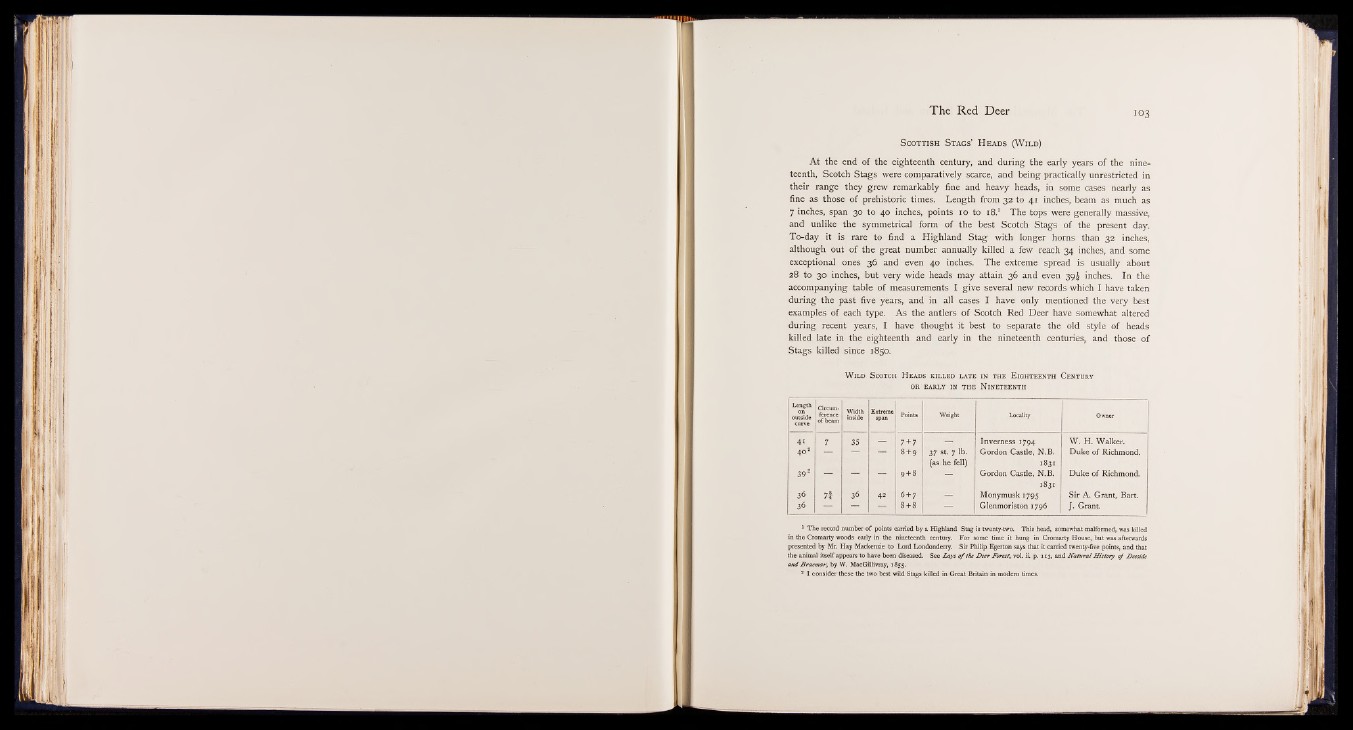
S cottish Stags’ Heads (Wild)
At the end of the eighteenth century, and during the early years of the nineteenth,
Scotch Stags were comparatively scarce, and being practically unrestricted in
their range they grew remarkably fine and heavy heads, in some cases nearly as
fine as those of prehistoric times. Length from 32 to 41 inches, beam as much as
7 inches, span 30 to 40 inches, points 10 to 18.1 The tops were generally massive,
and unlike the symmetrical form of the best Scotch Stags of the present day.
To-day it is rare to find a Highland Stag with longer horns than 32 inches,
although out of the great number annually killed a few reach 34 inches, and some
exceptional ones 36 and even 40 inches. The extreme spread is usually about
28 to 30 inches, but very wide heads may attain 36 and even 39£ inches. In the
accompanying table of measurements I give several new records which I have taken
during the past five years, and in all cases I have only mentioned the very best
examples of each type. As the antlers of Scotch Red Deer have somewhat altered
during recent years, I have thought it best to separate the old style of heads
killed late in the eighteenth and early in the nineteenth centuries, and those of
Stags killed since 1850.
W ild S cotch- H e ad s k il l e d l a te in th e E igh te en th C en tu r y
OR EARLY IN THE NINETEENTH
Length
outside
Circumference
of beam
Width
Eï p " Points Weight Locality c w
41 7 35 — 7 + 7 _ Inverness 1794 W. H. Walker.
40 2 — ; ^ 8 + 9 37 St- 7 lb-
(as he fell)
Gordon Castle, N.B.
1831
Duke o f Richmond.
39 2 ■ 9 + 8 — Gordon Castle, N.B.
1831
Duke o f Richmond.
36 7Î 36 42 6 + 7 — Monymusk 1795 Sir A . Grant, Bart.
36 — — — 8 + 8 — Glenmoriston 1796 J. Grant.
1 The record number of points carried by a Highland Stag is twenty-two. This head, somewhat malformed, was killed
in the Cromarty woods early in the nineteenth century. For some time it hung in Cromarty House, but was afterwards
presented by Mr. Hay Mackenzie to Lord Londonderry. Sir Philip Egerton says that it carried twenty-five points, and that
the animal itself appears to have been diseased. See Lays o f the Deer Forest; voL ii. p. 113, and Natural History of Deeside
and Braemar, by W. MacGillivray, 1855.
* I consider these the two best wild Stags killed in Great Britain in modern times.